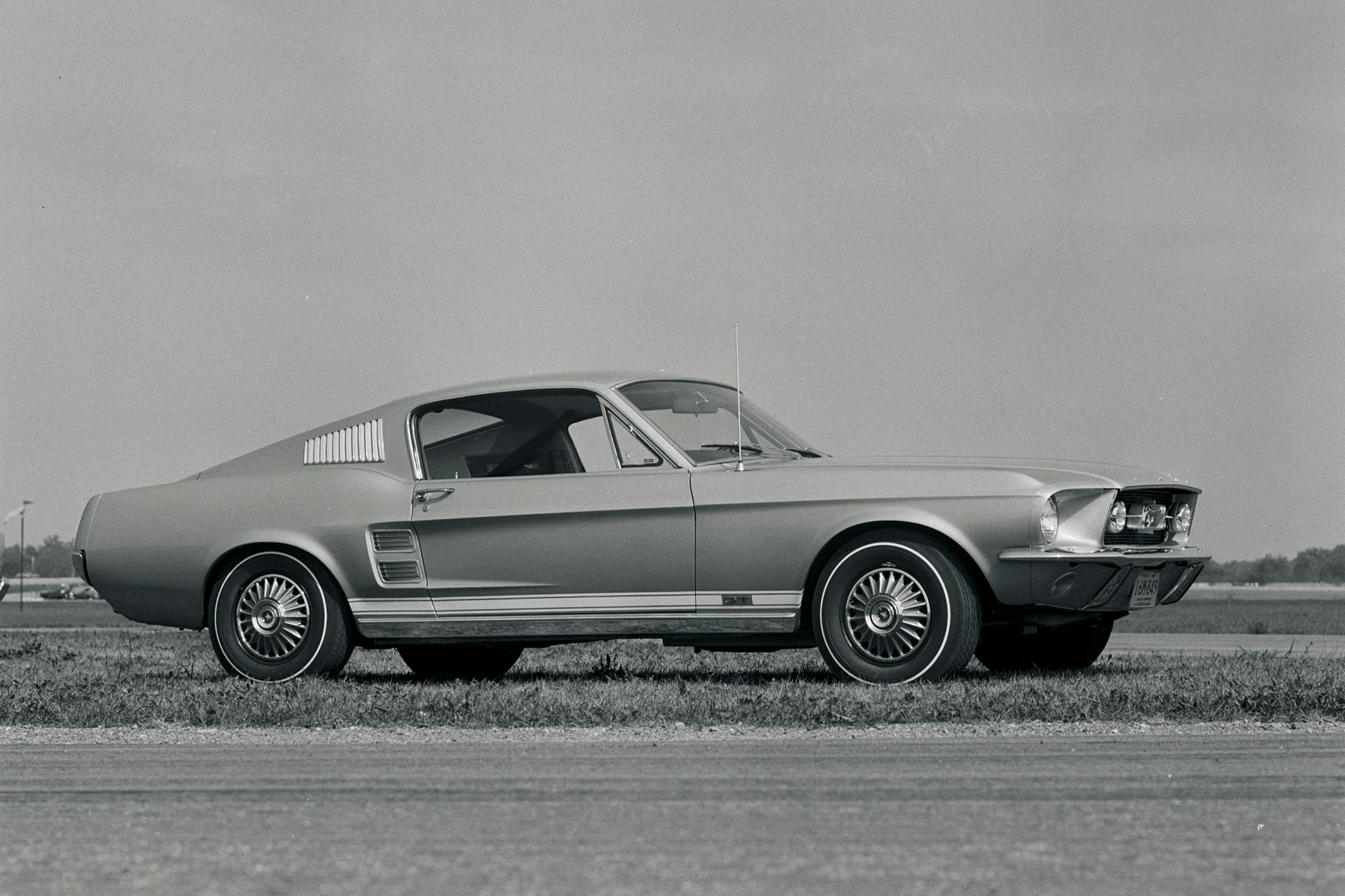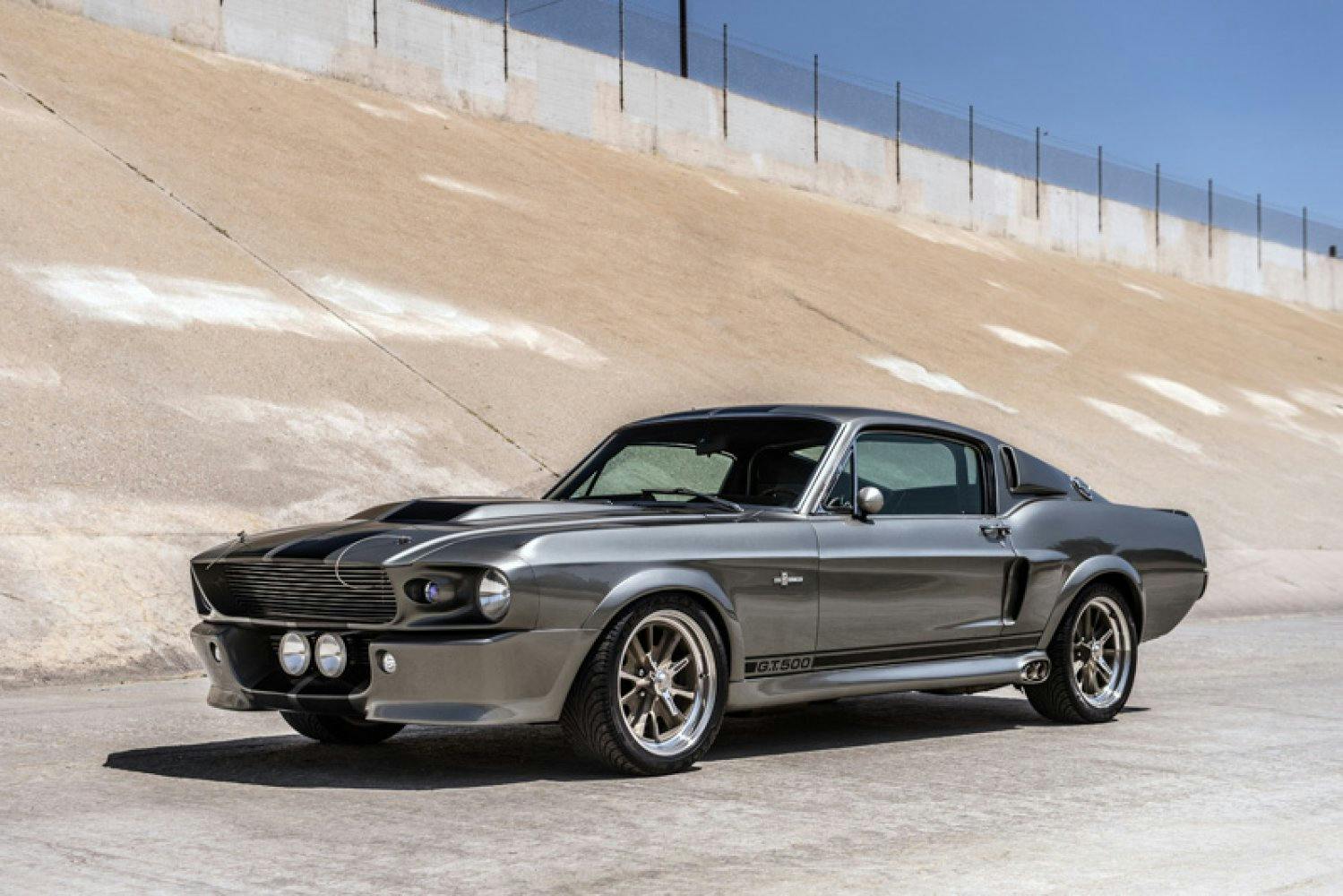Why copy a movie car when you can make a car your own?
Cars are nothing more than a functional assemblage of parts. That’s a fact. We enthusiasts assign other properties and values to them, because some of these inanimate objects bring us joy and stir emotion. No vehicle embodies that projection of personality quite like Randall “Memphis” Raines’ Eleanor, a 1967 Mustang, made famous in the 2000 remake of Gone in 60 Seconds.
Many fans and shops have customized ’67 Mustangs to mimic the movie car—the “unicorn” car that thief Raines can never seem to “boost.” The legality of Eleanor replicas has been the subject of multiple court battles since, and the most recent case just closed—much to the joy of one particular tuner who Mustang fans know well.
Carroll Shelby International, Inc. released a statement trotting out a victory in the lawsuit filed by Denice Shakarian Halicki, wife of deceased film director H.B. Halicki, in which she attempted to shut down Shelby’s building and selling of 1967 Mustangs as replicas of Eleanor.
The U.S. District Court for the Central District of California handed down a decision: The Eleanor character is not deserving of any “character” copyright protection. Shelby may continue building and selling replicas for now, but the situation might not last forever because …
This has gone back and forth before

Litigation was initiated by Denice Halicki back in the early 1990s following her husband’s passing during an accident that occurred while filming Gone in 60 Seconds II. Since Denice and H.B. had only been married a few months, she and his family were at odds over settling the estate, but Denice eventually won sole rights to her husband’s intellectual property, including Gone in 60 Seconds.
Denice took it upon herself to defend any and all copyright claims related to H.B.’s three main films: Gone in 60 Seconds (1974), The Junkman (1982), and Deadline Auto Theft (1983). Since then, there has been a veritable volley of opinions and cases tossed between Mrs. Halicki and various parties regarding the use of the Eleanor name and the car’s likeness.
Those decisions have not always favored one side.
Shelby isn’t the only outfit that has faced the litigious fervor of Mrs. Halicki. YouTube channel B is for Build was not only forced to remove videos in which it called a project car “Eleanor,” but also had the car seized as “property of Gone in 60 Seconds.” That project disappeared into the ether with little pushback from the relatively small B is for Build team, but larger, more powerful organizations have been fighting back.
The Daniels Test
There are a couple key things to know about the 30-plus-year history of litigation between Denice Halicki and other parties tied to the duplication of a particular set of visual modifications on a 1967 Mustang fastback. This isn’t the first time that a person has sought to protect a car with a trademark typically reserved for a character.
Back in 2020, the stage was set for the decision of Halicki v. Shelby that was decided late last month. The crux of the debate: Whether the car is a character and falls under the protections given by the Copyright Act. A standard was established from a case in which Denise Daniels sued The Walt Disney Company regarding the movie Inside Out. This is best outlined by the Ninth Circuit Court Panel:
“Although characters are not an enumerated copyrightable subject matter under the Copyright Act, there is a long history of extending copyright protection to graphically depicted characters. However, not every comic book, television, or motion picture character is entitled to copyright protection.”
It doesn’t take a law degree to find some gray area there. Anyone remotely familiar with copyright law knows the lengths to which Disney goes to ensure Mickey Mouse never enters the public domain. (This is at least partially the reason Mickey is still used as the Disney logo, as doing so fulfills requirements to keep him under both trademark and copyright protections.) The only problem with Mrs. Halicki’s reasoning? The standard for a copyrightable character is quite clear.
Again, from the Ninth Circuit:
“A character is entitled to copyright protection if (1) the character has physical as well as conceptual qualities, (2) the character is sufficiently delineated to be recognizable as the same character whenever it appears and displays consistent, identifiable character traits, and attributes, and (3) the character is especially distinctive and contains some unique elements of expression.”
This three-part standard became known as The Daniels Test. Passing it required some serious gymnastics for Mrs. Halicki. While her husband did create the Eleanor character, its representation was inconsistent over time and lacked well-defined, distinctive elements.
The strongest argument against Eleanor fitting this criteria is the fact that the 1974 film portrayed Eleanor as a 1971 Ford Mustang, while the 2000 remake featured a highly stylized model from 1967, which became its most famous representation. Park the two side by side and you would struggle to find similar distinctive features besides those put in place by Ford itself.
The court speaks
In the November 29, 2022 opinion, the Central District of California did not mince words. “Much of the Ninth Circuit panel’s commentary on the copyrightability issue appears to have stemmed from an unfortunate practice on the part of the Halicki Parties to embellish facts in their briefing.”
Ouch.
The court also shot down attempts to make Eleanor the Mustang into a character by referencing the plot line. It went so far as to explain how other attempts to steal cars in the film are sidetracked—including mentioning the scene that insinuates the dog was fed laxatives so that the keys it ate could be retrieved.
The crux of the argument against Halicki’s right to the Eleanor likeness is the inconsistency of the car that uses the name. In the 2000 remake alone, Eleanor appears in two different color schemes and shapes: Polished, with silver and black stripes; then rusty and in rough condition in the final moments of the film. (And that’s completely ignoring the totally different cars used in the original series of films.)
While it might seem impossible for a car to meet the high bar of The Daniels Test, one has cleared it. In 2015 a suit between Garage Gotham and DC Comics confirmed that the Batmobile qualified as a copyrightable character, and thus Garage Gotham was found to be infringing on DC Comics trademark by producing and selling “Batmobiles.” The court’s opinion clarifies that the consistency of the Batmobile’s appearance over years granted it protection under copyright law. Hence why you don’t see many Batmobiles running about your local show-and-shines.
Cool, so you can build one now—but why?
See, the thing about cars is that they are a wonderful extension of their owner’s personality. Every car can be personalized, from subtle to outright ostentatious. What you feel about the Nic Cage Eleanor likely aligns with how you feel about modified cars in general; but, heck, even a perfect restoration says something about the owner.
With that said, there is nothing more boring than cookie-cutter cars—even if they are modified cars.
It’s worth taking a moment to admit I have watched Gone in 60 Seconds a lot. When certain cable channels played it more or less on loop over the weekends, my father and I would sit and watch together. I’ve chuckled at least a dozen times at “this is an A-star, not an Apache,” as the Silver fastback speeds down the Los Angeles River faster than the police helicopter giving chase.
As much as I enjoy the film, I’m burned out on Eleanor Mustang clones. Are they pretty? Yes. Most of them are chock full of go-fast parts, too. That’s cool. But when driving one about, are you pretending to be the thief (Memphis Raines) or the never-seen owner who loses their car after parking in a Long Beach parking garage one afternoon? Either answer is at least a little strange.
Why pretend to be either of those characters when you could create something uniquely yours? The Eleanor Mustang is arguably an extension of Memphis Raines’ personality, and he is a fictional character. So is Bandit and his Trans Am. Also the Duke Boys and their 1969 Dodge Charger, or Bob Falfa and his Chevy 210. You are a real person who can make your car an extension of yourself. Why be someone fictional?
We all look for escape sometimes. Driving down the street pretending to be a “one last ride” car thief is not as crazy as it might sound (so long as you aren’t driving like you are in the police chase), but you don’t need the outward appearance of an Eleanor Mustang to feel like a main character.
Paint and body kit doesn’t make your imagination much stronger. Build yourself the car you like, and make it yours. Let your imagination do the rest—and never worry about being served papers from Denice Halicki.
Check out the Hagerty Media homepage so you don’t miss a single story, or better yet, bookmark it.




The original Gone in 60 is so much better. It was a shame they went with a more popular model in the remake as far as I am concerned. Kind of like remaking Herbie the Love Bug with a Passat (if that were to happen).
People love movie cars because they grab attention. Sometimes they are even really good versions of said vehicle (Chargers do look good in orange…).
…and sometimes the only way to ESCAPE the celebrity connection is to modify the car in question.
The original is better, both the movie and the car. Having said that I liked the remake movie but the Mustang was overdone to me. Too much “stuff” going on.
Let’s face it: part of the reason we own, drive, and show our classics is for the attention they get. And that part is fluid. Sometimes it’s very small and way down the list, but other times, it looms very large. And movie car copies (at least most of them) get attention. So I think there are times when having one would be quite satisfying, and other times that it will not.
For instance, I often Jones for a Wagon Queen Family Truckster – don’t you? 😍
Recently, my cousin mentioned he’d like to buy another car for his collection. He’s a car affectionate, and I believe he’d be thrilled to know that he’d get a customized car. I’ll share your insight with my cousin about building or modifying a car to show his personality. https://www.kellymoss.com/membership/base